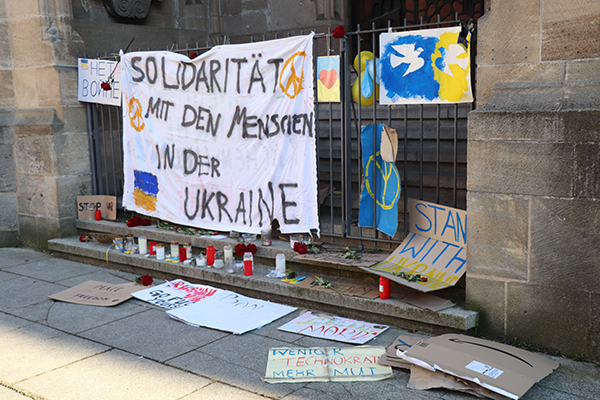By Wolfgang Sannwald
There have been at least 17 other wars in Europe since the end of the Second World War (1939-1945). The one between Russia and Ukraine is the most recent, lasting since 2014. The three Caucasus states Georgia, Azerbaijan and Armenia, where there have also been several wars, are not included. According to the Arbeitsgemeinschaft Kriegsursachenforschung (AKUF) at the University of Hamburg, Europe is one of the continents with the fewest wars worldwide. However, after 1945, Western states often took part in wars on other continents, above all Great Britain, the USA and France.
The Hungarian peace researcher István Kende (1917-1988) defines war as a violent mass conflict. Two or more armed forces participate in it. And the warfare is at least partly centrally directed. Armed operations occur with a certain continuity. By these standards, wars in Europe since 1945 include: Two Greek Civil Wars (1944-1945 and 1946-1949), two Spanish Civil Wars (1945-1950, 1968-1979 in the Basque Country), three Cyprus Wars (1955-1959, 1963-1964, 1974), the Hungarian Uprising (1956), the Northern Ireland War (1969-1997), the wars in Romania (1989), Moldavia (1992), Slovenia (1991), Croatia (1991-1995), Bosnia (1992-1995), Kosovo (1998-1999), Macedonia (2001) and the Ukraine War (since 2014).
AKUF has identified different histories and identities in Ukraine and traced them back to the mid-19th century. These came to life when the Soviet Union collapsed in December 1991. In the country, the researchers identified on the one hand a majority of pro-European and on the other hand a majority of Russia-oriented regions and population groups. The war broke out when Ukraine actually wanted to conclude an association agreement with the European Union (EU). The then government of President Viktor Yanukovych (born 1950, president since 2010) delayed the signing. Pro-Europeans then protested on Maidan Square in Kiev. The Ukrainian parliament deposed Yanukovych on 21 February 2014, who fled into exile in Russia. In close temporal relation to this (18 March), Russia annexed the Ukrainian peninsula of Crimea and in early April 2014, pro-Russian separatists occupied the buildings of the local authorities in Lugansk and Donetsk in south-eastern Ukraine. War has been raging there ever since. The Organisation for Security and Cooperation in Europe (OSCE) brokered two peace plans (Minsk I and Minsk II), but they had little effect. By the end of 2018, some 12,000 to 13,000 people had died in the conflict, according to the United Nations (UN). The number of civilian casualties by the end of 2018 is said to have been around 270. In February 2022, Russia escalated the war by launching a major offensive against Ukraine.
Most wars in Europe since 1945 have taken place within a state. On the one hand, they were about the form of society and power within the state. On the other hand, warring parties fought for greater or complete independence from the central government. According to AKUF, both reasons for war are related to “a social integration that has not yet taken place or has failed in a state that often exists only formally”. The Ukraine war has been clearly different from this since 2022 at the latest, because in it European states are now fighting directly against each other.
The Hamburg researchers have also studied the results of wars worldwide after 1945. Only one fifth of the worldwide wars ended in a military victory for the attacking side. In one third, the militarily attacked side held its ground. One tenth of the wars ended with a cessation of fighting and “only slightly more often did an agreement, be it a ceasefire or a compromise, stand at the end”. More than two-thirds of interstate wars ended in a draw in terms of political outcome. The victims of wars include not only the fallen soldiers and civilians killed, but also millions of refugees. According to the United Nations, 82.4 million people were refugees worldwide at the end of 2020. In most countries of origin of refugees and internally displaced persons, there was war, civil war or violence by armed groups against individual population groups. At that time, 6.7 million refugees came from Syria and 2.6 million from Afghanistan.
https://www.wiso.uni-hamburg.de/fachbereich-sowi/professuren/jakobeit/forschung/akuf.html
tun22030108
Mahnwache für die Ukraine an der Tübinger Stiftskirche. Foto: tünews INTERNATIONAL / Mostafa Elyasian.




